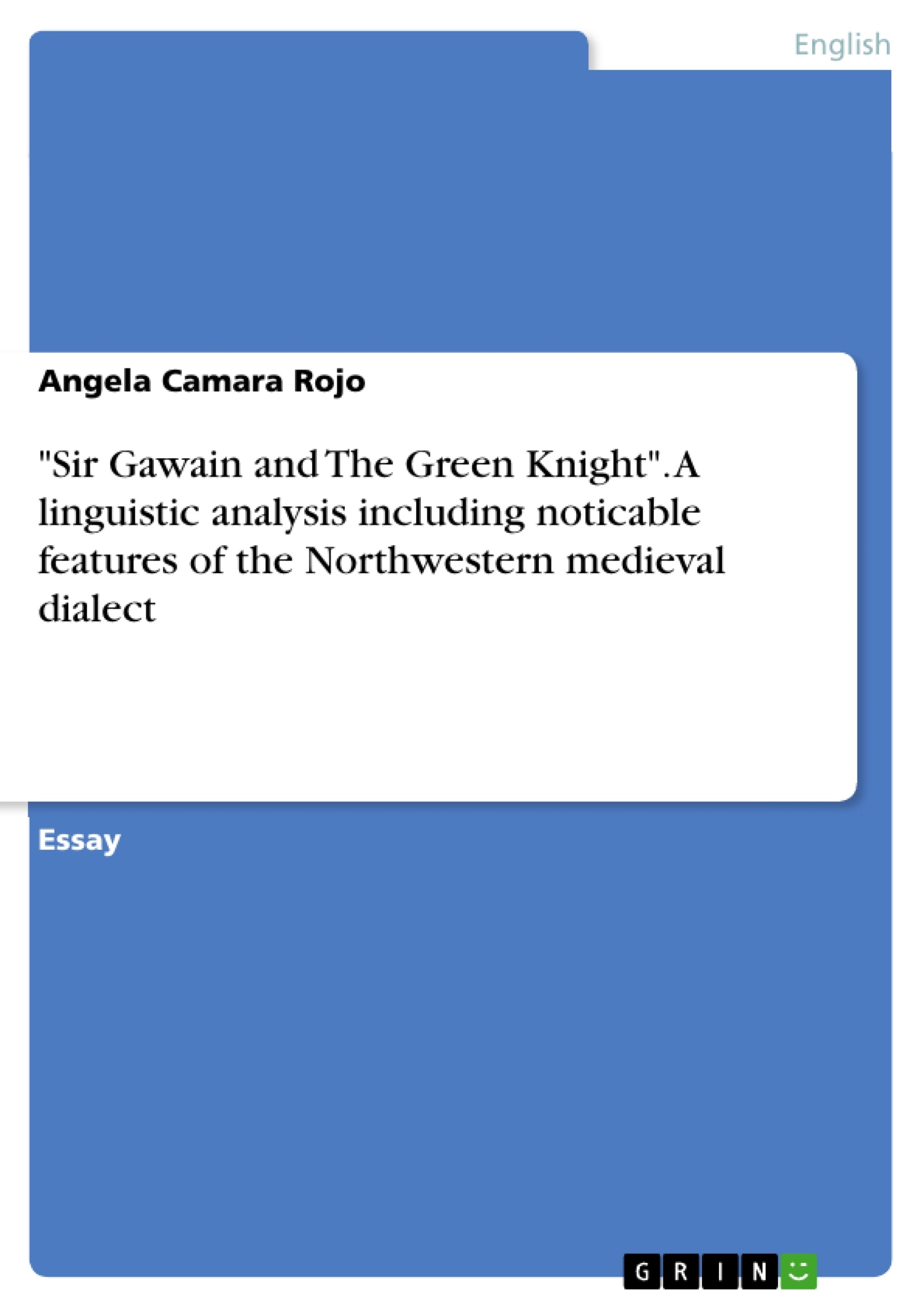The purpose of this essay is to present an analysis of the Middle English Romance, "Sir Gawain and The Green Knight", focusing on phonological, orthographical, morphological and etymological features that appear in this extract. As Sir Gawain and The Green Knight was written in the Northwest Midlands, some of the features typical of West Midland and Northern dialect are bound to be found in the text.
Inhaltsverzeichnis (Table of Contents)
- INTRODUCTION:
- ORTHOGRAPHY:
- GRAMMAR:
- PHONOLOGY:
- MORPHOLOGY:
- LEXICAL BORROWINGS:
Zielsetzung und Themenschwerpunkte (Objectives and Key Themes)
This essay analyzes the Middle English Romance, Sir Gawain and The Green Knight, focusing on its phonological, orthographical, morphological, and etymological features. The essay explores the Northwest Midland dialect features found within the text.
- Orthographic features of Middle English, including the use of runic characters and alternate spellings
- Grammatical features of Middle English, such as inflectional endings and the shift to an analytic language
- Phonological features of Middle English, including vowel and consonant sounds
- Morphological features of Middle English, such as participles and plural formation
- Lexical borrowings from Old Norse, Norman-French, and Latin, as well as their impact on the vocabulary of the text
Zusammenfassung der Kapitel (Chapter Summaries)
- INTRODUCTION: This section provides a brief overview of the purpose and scope of the essay, highlighting its focus on analyzing the linguistic features of the Middle English Romance, Sir Gawain and The Green Knight, with specific attention to the Northwest Midland dialect.
- ORTHOGRAPHY: This section delves into the orthographic features of the text, particularly the use of runic characters like thorn and Wynn, and their later replacement by Latin characters. It also explores the medieval letter yogh and its eventual substitution by -g. The section further discusses the variation in spellings for certain words, reflecting the lack of a standardized written form of English during the medieval period.
- GRAMMAR: This section examines the grammatical features of Middle English, highlighting its transition from a synthetic language to an analytic language. It specifically focuses on the shift in inflectional endings, the use of the "indeterminate vowel", and the evolution of the verbal present participle suffix.
- PHONOLOGY: This section analyzes the phonological features of the text, drawing connections to the Cheshire dialect of the Northwestern Midlands. It discusses the pronunciation of vowels, particularly the sounds of 'a', 'e', 'i', 'o', and 'u'. Additionally, it explores the pronunciation of the letter yogh and the letters 'þ' and 'th'.
- MORPHOLOGY: This section delves into the morphological features of the text, focusing on the present participle suffix and its evolution from -ande/-ende to -ing. It also examines the loss of the -ge prefix in past participles, the formation of plurals, the use of genitive inflectional endings, and the retention of the -st suffix for forming superlatives.
- LEXICAL BORROWINGS: This section investigates the lexical borrowings in the text, highlighting the predominance of words of Germanic origin, particularly from Old English. It then explores the impact of Norman-French influence on the vocabulary, as well as the presence of Old Norse and Latin borrowings, and their specific examples within the text.
Schlüsselwörter (Keywords)
This essay focuses on the linguistic features of Middle English, particularly those found in the Northwest Midland dialect. Key terms include phonology, orthography, morphology, etymology, Sir Gawain and The Green Knight, Middle English, Northwest Midland dialect, runic characters, inflectional endings, vowel sounds, consonant sounds, lexical borrowings, Old Norse, Norman-French, and Latin.
- Quote paper
- Angela Camara Rojo (Author), 2015, "Sir Gawain and The Green Knight". A linguistic analysis including noticable features of the Northwestern medieval dialect, Munich, GRIN Verlag, https://www.grin.com/document/419619




